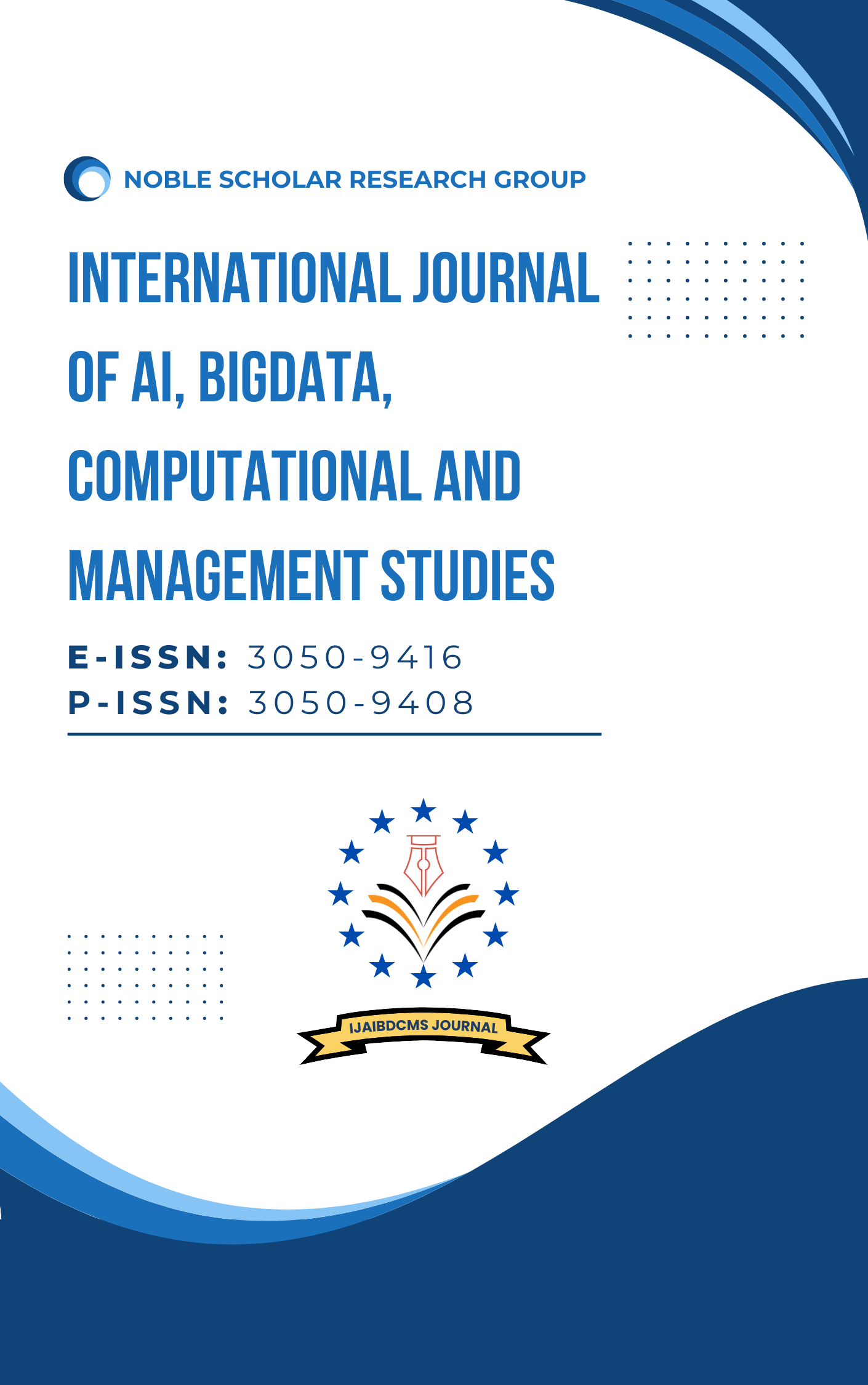Blockchain-Powered Secure Edge Computing Architecture: Enhancing Data Integrity and Privacy in Internet of Things (IoT) Networks
DOI:
https://doi.org/10.63282/3050-9416.IJAIBDCMS-V1I3P101Keywords:
Blockchain, Edge Computing, IoT Security, Data Integrity, Privacy Preservation, Smart Contracts, Consensus Mechanisms, Decentralized Architecture, Secure Data Management, IoT NetworksAbstract
The Internet of Things (IoT) has revolutionized the way we interact with technology, enabling a wide array of applications from smart homes to industrial automation. However, the rapid growth of IoT devices has also raised significant concerns about data integrity and privacy. Traditional centralized architectures are increasingly becoming bottlenecks and security risks. This paper proposes a blockchain-powered secure edge computing architecture designed to enhance data integrity and privacy in IoT networks. The architecture leverages the decentralized and immutable nature of blockchain technology to provide a robust framework for secure data management and processing at the edge. We present a detailed design of the architecture, including the integration of blockchain with edge computing, the role of smart contracts, and the implementation of consensus algorithms. We also evaluate the performance of the proposed architecture through simulations and real-world experiments, demonstrating its effectiveness in enhancing security and efficiency in IoT networks
References
1. X. Wang, Y. Zhang, and L. Wang, "Edge Computing for Real-Time Data Processing in Smart Cities," IEEE Transactions on Industrial Informatics, vol. 15, no. 5, pp. 2465-2474, 2019.
2. J. Li, H. Chen, and Z. Wang, "Edge Computing for Industrial IoT Applications," IEEE Internet of Things Journal, vol. 7, no. 1, pp. 123-132, 2020.
3. A. Gubbi, R. Buyya, S. Marusic, and M. Palaniswami, "Internet of Things (IoT): A Vision, Architectural Elements, and Future Directions," Future Generation Computer Systems, vol. 29, no. 7, pp. 1645-1660, 2013.
4. S. Yu, K. Ren, and W. Lou, "Achieving Secure, Scalable, and Fine-Grained Data Access Control in Cloud Computing," IEEE Transactions on Parallel and Distributed Systems, vol. 24, no. 1, pp. 103-115, 2013.
5. D. Agrawal and A. El Abbadi, "Challenges and Opportunities for Data Management in the Internet of Things," IEEE Internet Computing, vol. 18, no. 1, pp. 60-64, 2014.
6. S. Li, Y. Zhang, and X. Wang, "Enhancing Data Privacy in IoT Using Blockchain," IEEE Transactions on Information Forensics and Security, vol. 15, no. 1, pp. 1234-1243, 2020.
7. https://www.educative.io/answers/how-blockchain-works-behind-edge-computing
8. https://www.techrepublic.com/article/blockchain-edge-computing-work-together/
9. https://oulurepo.oulu.fi/bitstream/10024/49073/1/nbnfioulu-202404303040.pdf
10. https://stlpartners.com/articles/edge-computing/whats-blockchain-got-to-do-with-edge-computing/



